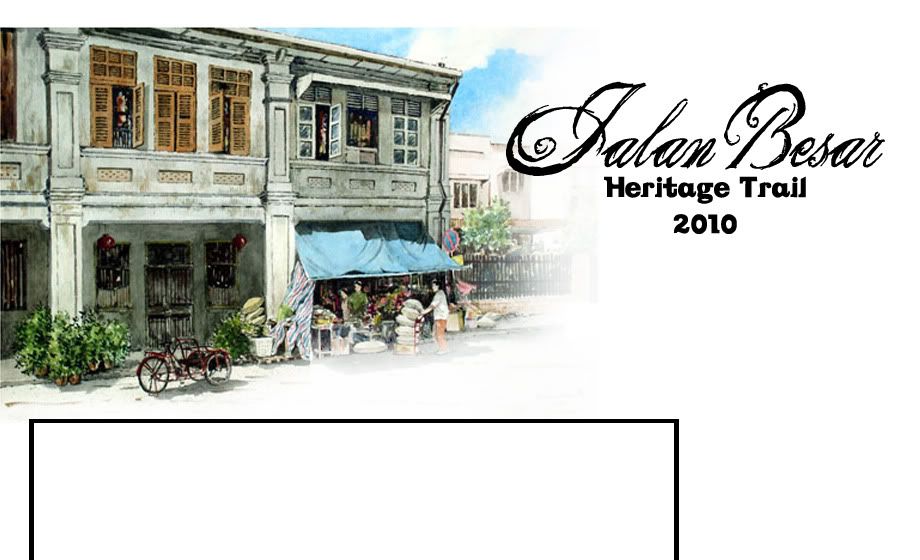

In my opinion, conservation and commercial reuse of historical sites in Singapore was rather unsuccessful. Many of the original heritage sites are no longer standing, and in their place are new landmarks. For example the Central Sikh Temple that we see today is actually the new building, and in a way has lost it's heritage value. Same for the New World Gateway. Attempts have been made to preserve it, but by fencing the gate? What was in its place before City Square Mall and City Square Residences was built? I guess we'll never really get to see for ourselves... Or the demolished Bendemeer House? Though its grandeur was said to have deteriorated, was it not worth preserving? Maybe Urban Revelopment projects was more important than the respectable Bendemeer House... Some may say that we are rich in heritage, but I beg to differ. Frankly, we could have done better than that. But due to the circumstances and the lack of land which we desperately need to house the then growing population, this was possibly the best we can do, and I cannot help but applaud the leaders who transformed Kampong Temasek into Urban Singapore. But it doesn't change the fact that our heritage is now, in my opinion, comparable to a chipped porcelain ware.
In urban cities like Singapore, which experiences rapid economic growth, modern high-rise buildings were built in replacement of historic districts with rich cultural heritage. Agreeing with Jwen, in the case of Jalan Besar, some facades of buildings are still carefully restored. An example would be the Petain Shophouses, intricate and ravishing floral tiles were still well preserved and it gave a strong contrast with the HDB surrounding it.
Through the trail we have found some traditional delicacies , for example Along Kitchener Road, there is a Fuzhou oyster cake stall which serve deep-fried batter filled with oyster, coriander and meat, also we found several Roti prata restaurant on our way to Syed Alwi Road. The preservation of these local delights added more favours to Jalan Besar. Savoring these traditional dishes through the heritage trail enhances our understanding to the history and makes the trip fun and experimental.
I would agree that Singapore is rather successful in terms of the urban conservation policies in preserving its historic districts as evidently shown through the Jalan Besar trail. For instance, when we passed through Mustafa shopping complex, there were plenty of shop houses selling products like, henna, head flowers, coconuts and even cosmetics in traditional looking packaging. An analysis of shops showed that preservation had succeeded in retaining the activities which reflect the community life in Jalan Besar. I would conclude that other than the demolishment of New World for commercial reuse (replaced by Fortuna Hotel), most of the architectures with rich cultural values were mainly well conserved.
I was amazed to find that some facades of buildings in Jalan Besar are still carefully restored, such as the Petain Shophouses, and the Holy Trinity Church (although probably some minor touches). Despite this, an underlying question remains in my mind: Southeast Asia is placed significantly on the world map when it comes to preserving historical sites, but why then is Singapore not listed under the UNESCO World Heritage Site?
In my opinion, Singapore has lots to offer, especially where Jalan Besar is concerned, in which it is said to have dated back to the 1830s. However, the commercial reuse of the area may have caused its downfall as a successful heritage site. To put it simply, it might be better known as an ‘Urban heritage’ rather than historical. Having seen countless developments (and on-going developments) such as the CitySquare Shopping mall, MUSTAFA centre, and many more residences built in the Jalan Besar area, it is no wonder one would barely notice the New-World Gateway, or marvel at the splendor of the original Jalan Besar Stadium amongst all the other newer ones.
I personally believe that Singapore has done its best in preserving the nation’s best historical assets, but more importantly, I think that historical sites are only valuable when they are properly appreciated, where people need to take pride in the country’s heritage in order to preserve it for generations and years to come.
Jalan Besar literally means “Big Road’ (“Jalan Besar” in the Malay language).
Historical Background: It is one of the first roads to be built in Singapore in the 1830s. It served as a path through the betel nut and fruit orchard owned by brothers Richard Owen and George Norris, whose father was an officer of the East India Company Army. In the 1890s, the road was expanded and given its present name, which suggested it to be one of the biggest roads then.
Jalan Besar in the early 20th Century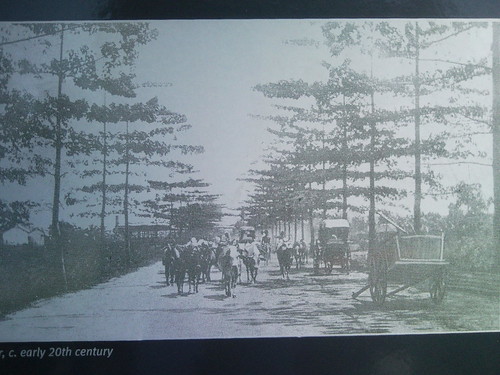
Jalan Besar today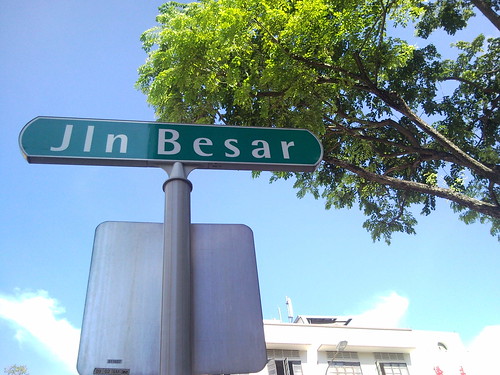
To get a first-hand experience and understanding of Jalan Besar, our team decided to embark on a trail to discover the splendors and the history of Jalan Besar’s colourful past, which is reflected in the shophouses and activities found in the area. Therefore, on a Saturday morning, our group met at our first meeting point - Lavender MRT Station.
Getting out of the MRT station, the place was bustling with people! However, one noticeable feature of the area were its street names, which are largely named after World War I personalities and battlesites. Many of these roads were named by the Municipal Commissioners in 1926 in commemoration of the Great War fought in Europe. Here are some roads we passed by and found:
(a) Allenby Road is named after British field Marshall, Edmund Allenby Beatty
(b) Kitchener Road is named after British Secretary of War, Lord Horatio Kitchener.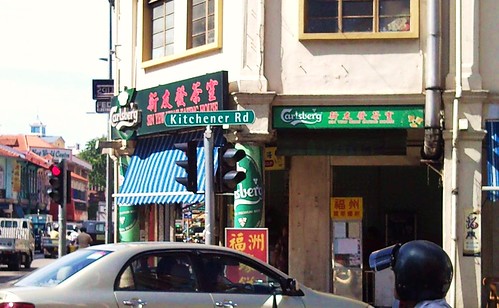
A picture of Lord Kitchener
(c) Verdun Road is named after a Battle site in France during World War I – Verdun, 1916.
(d) Petain Road is named after French Commander of Battle of Verdun, Marshal Phillipe Petain, because the Municipal Council wanted the people to keep in mind the clashes that were going on in Europe at that point of time.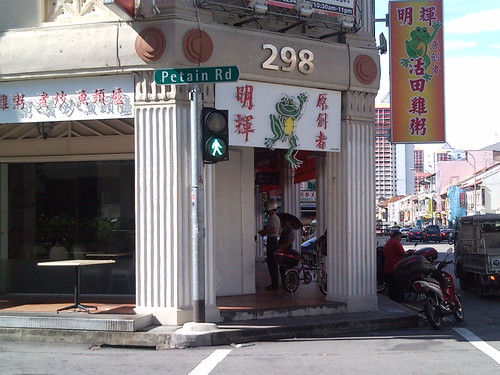

Jalan Besar Stadium
The stadium has a long history dating back to 1932, when it was first built. It was also considered as the birthplace of Singapore football, where the Malaya Cup (1932-1966) and later, the Malaysia Cup (1967-1973), were held for 41 years before moving over to the National Stadium.
During the Japanese Occupation, the stadium witnessed one of the most terrifying events where it became one of the Sook Ching mass screening and execution sites. Apart from that, it was also used as a language centre to teach Japanese. It officially re-opened in June 2003 after it was closed in 1999 for rebuilding.
Inside the stadium – the original field was retained, serving as a reminder of its rich past.
The stadium offers a seating capacity of 6,000!!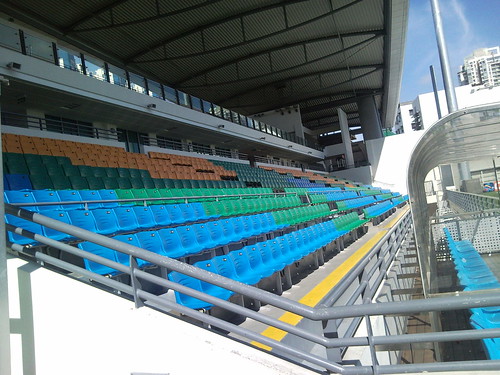
Outside the stadium – Mei Sing photographs the rest of the group members.

YuTing and Celestine with the marker located near the stadium which tells you a brief history of the place.
Jay walking in hope of tasting some good dim sum!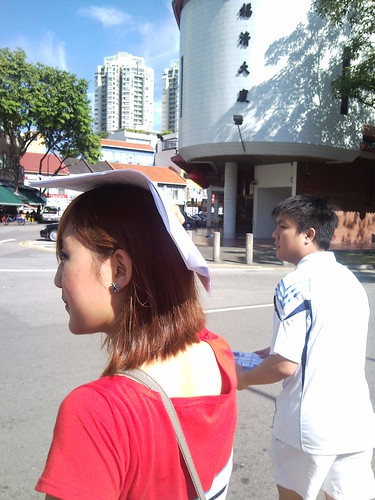
Food pit stop at Swee Choon Dim Sum, 191 Jalan Besar.
Swee Choon Dim Sum has become a part of Jalan Besar’s history , where it was founded in 1962, and today is still located at the original historical site. The restaurant is famous for its fresh handmade bao as well as the back lane dining experience. Unfortunately, we missed its opening hours (only opens at wee hours – from 6pm to 10am!) We very much wanted to try the dim sum there, therefore making a trip back to the restaurant on a separate day!
Mei Sing and Celestine inside the restaurant before opening hours.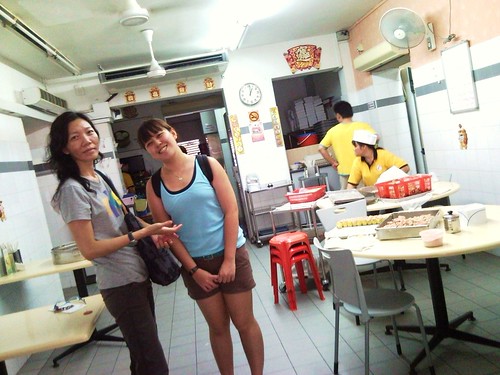
Behind the scenes – A lady makes Siew Mai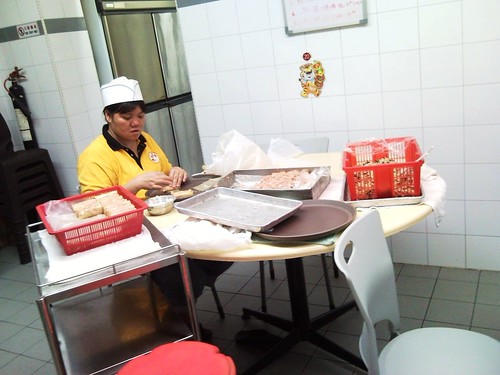
The air-conditioned interior is clean with their food menu pasted on the wall. It boasts a menu of over 50 popular Cantonese and Shanghainese snacks!
Be spoilt with a large array of dim sum choices!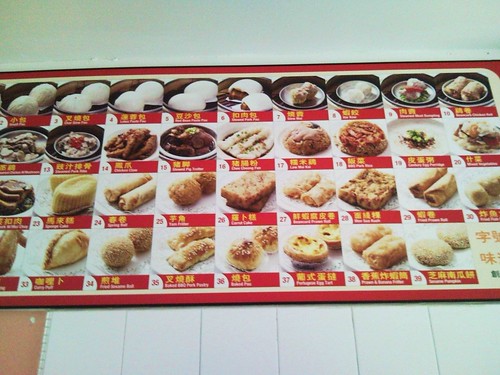
Jwen ‘Look! It’s the famous dim sum signboard!’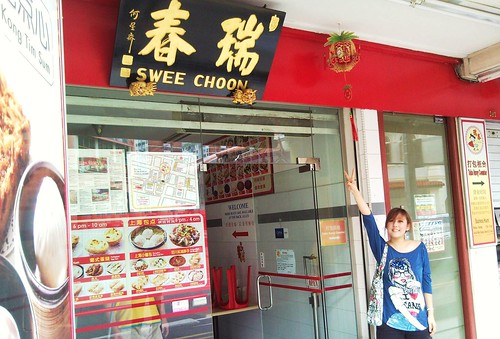
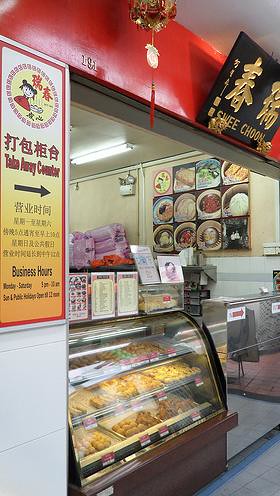
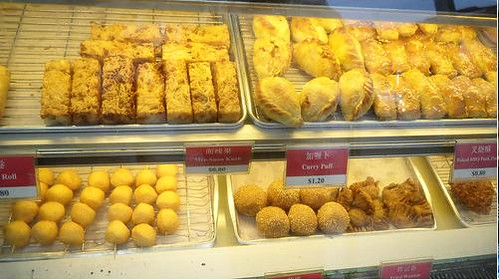
Eager to eat!
Aftermath of the meal.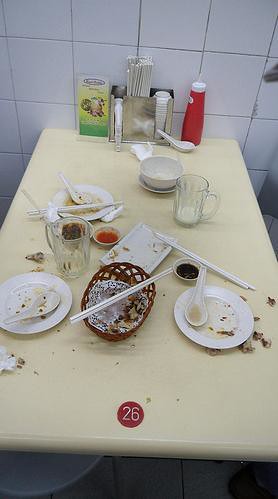
Samuel using GPS to locate our next stop
Holy Trinity Church
Located at the junction of Horne Road and Tyrwhitt Road, it was founded by The Anglican Chinese Churches in Singapore which began in 1856 under the St. Andrew's Church Mission. It was later headed by the Foochow and Hokkien-speaking missionaries (which explains the unusual unique Chinese Art Deco architecture of the building) in 1902 and services were held initially at the St Peter's Church at Stamford Road. The church then moved to its current location in 1941.
Notice the Chinese-styled roofs and motifs of the church such as the upturned eaves and tiles, not typically seen in other olden day churches.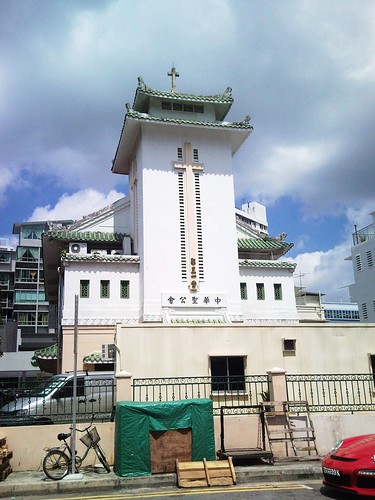
Jwen, YuTing and Celestine at the gates of the church.
Celestine, Samuel and YuTing at the Church’s façade.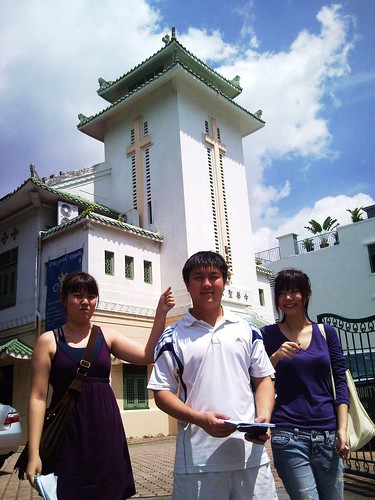
On to our next destination.
Along the way, Jwen finds some beautifully engraved pillars with flower motifs…
Along Kitchener Road, we find something we've never seen before. Its infact a Fuzhou oyster cake (deep-fried batter filled with oyster, coriander and meat). Costs about 1.30$, feel free to give it a try if you're near that area. We give it two thumbs up!! :)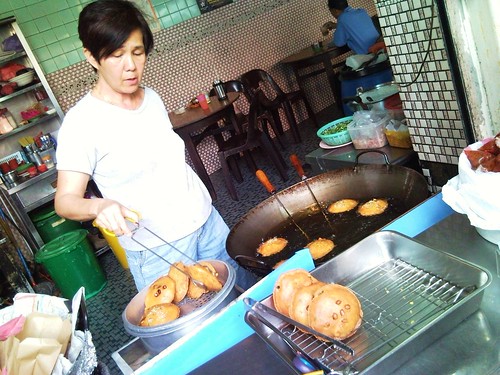
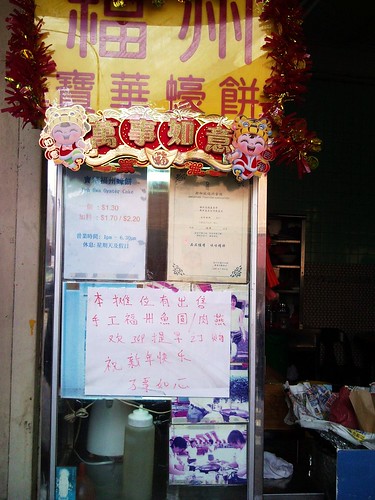
Next stop,
Syed Alwi Road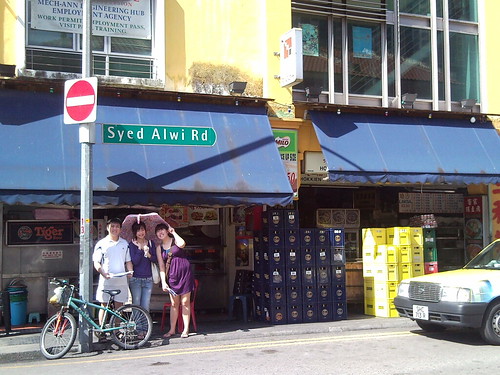
Before that picture was taken, a lorry suddenly moved ahead of us and parked there.
Samuel: "OUI, why block our way!"
Shophouses along Syed Alwi Road.
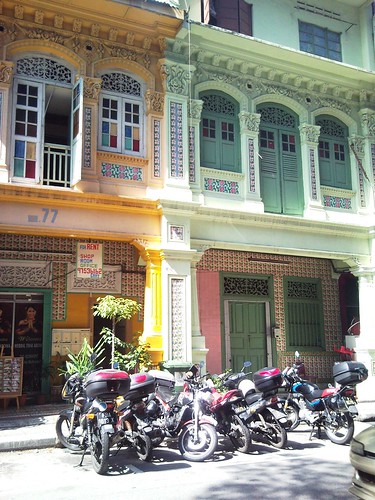
Other names:
The Chinese residents refer to the road as 'sai ek a liu koi thai tu long pi' in the Chinese Hokkien dialect which means "Syed Alwi Street beside the abattoirs".
Named after:
Formerly known as Syed Allie Road, the road was named after Syed Allie bin Mohammed Al Junied (1814-1858), the son of Syed Mohammed Bin Harun Al Junied, and nephew of the famous Yemeni Arab leader Syed Omar bin Ali Al Junied.
Syed Allie carried on his father's business and also contributed generously to the community. This road dissecting Jalan Besar was named after Syed Allie because in the 19th century, he bought 70 acres of swampland in Kampong Kapor. It soon became known as Syed Allie's land and the road was named after him.
Reasons:
In the 19th century, Syed Allie brought 70acres of swampland in Kampong Kapor.
Then became known as Syed Allied lang and therefore the road was named after him.
Shop/ communities:
Food- Kueh Kueh/ roti prata etc
We decided to visit one of the restaurants found along the streets: Saravanna Bhavan Indian Vegetarian Restaurant. It serves North Indian food!
Jwen and Celestine in the restaurant.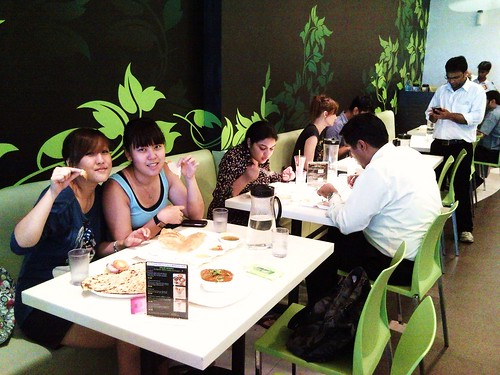
Paper Roast Dosa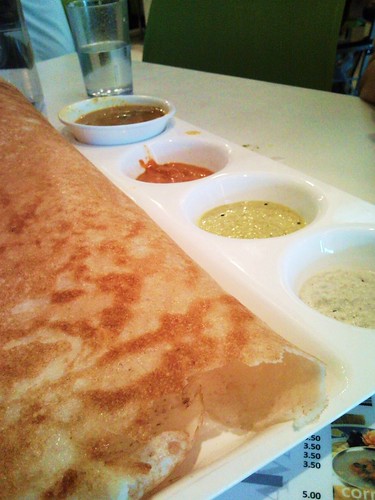
Meising enjoying the Paper Roast Dosa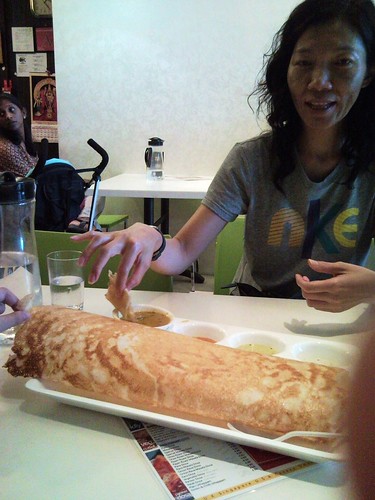
Our garlic Naan.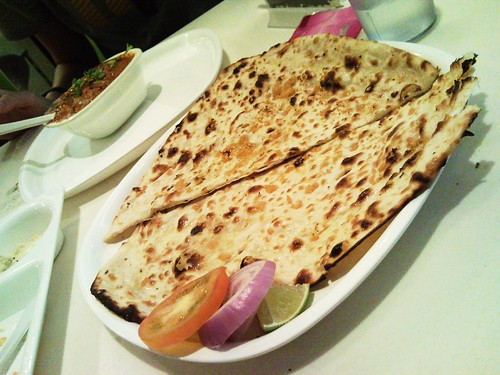
Curry to go with the Naan. Spicy!!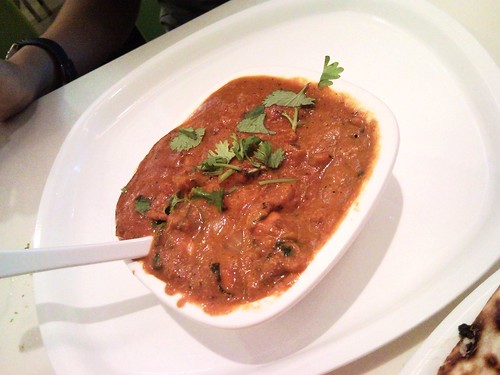
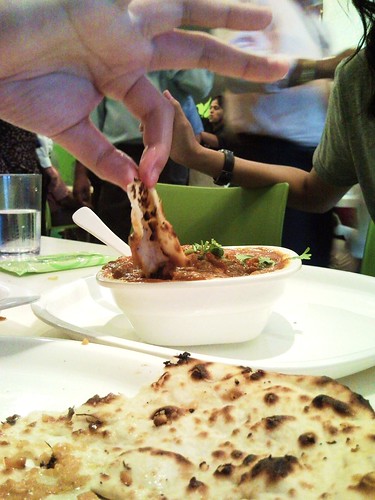
Next up, Pitstop 1. :)
MUSTAFA CENTRE!! Who cannot resist the air-conditioned mall on such a scorching hot day!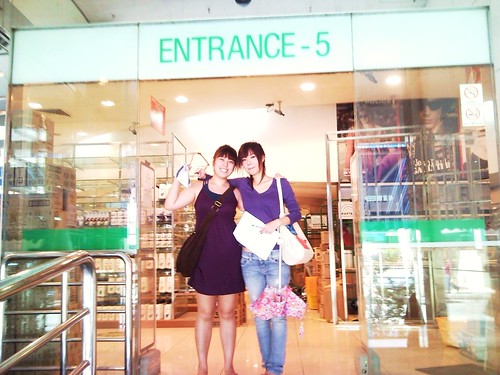
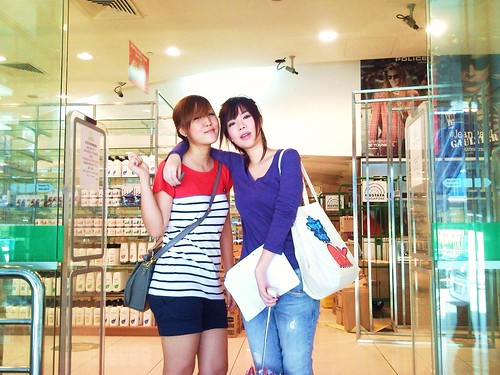
The New World
The standing place now would be on where Fortuna Hotel is!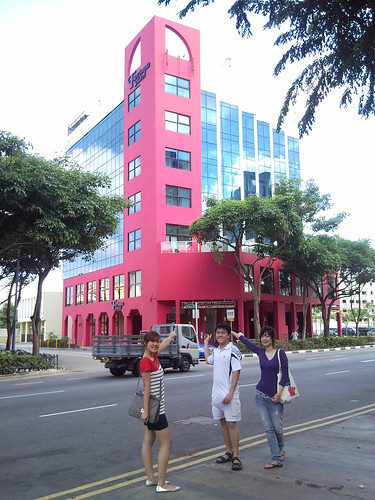
New World Centre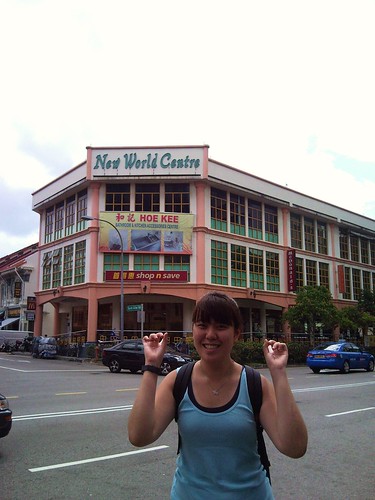
History of New World Centre:
New World Centre is located near Syed Alwi Road, and was a prominent landmark in Jalan Besar, as it occupied a large area bounded by Serangoon road and Kitchener road. First opened in 1923, the New world attracted people from all walks of life with its exciting entertainment programmes.They included boxing and wrestling matches, variety shows and a small cabaret with Filipino artisans.
Interestingly, there were also Teochew and hokkien operas, Bangsawan/ malay opera show, as well as a fair which sold everything from trinkets to clothes to canned food. It was the source of popular entertainment in that era. However, New world was closed in mid 1980s.
New World Amusement Park (Or what's left of it)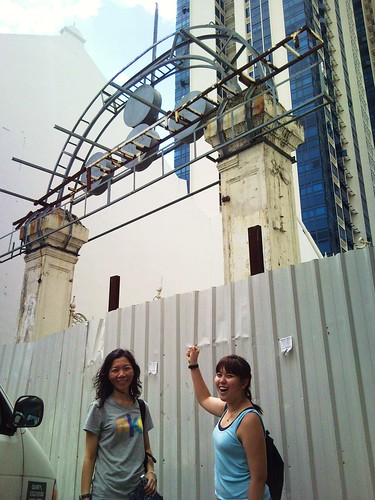
En route, thirst quencher...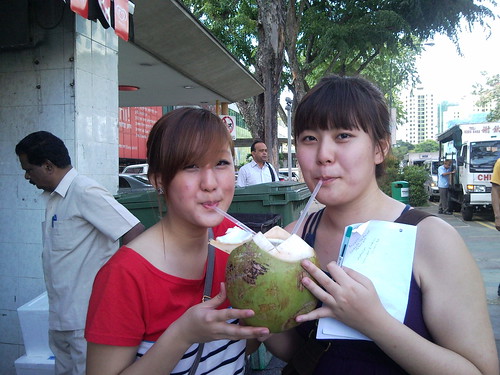
Still drinking along the way. Nevermind, pose in front of City Square first... :)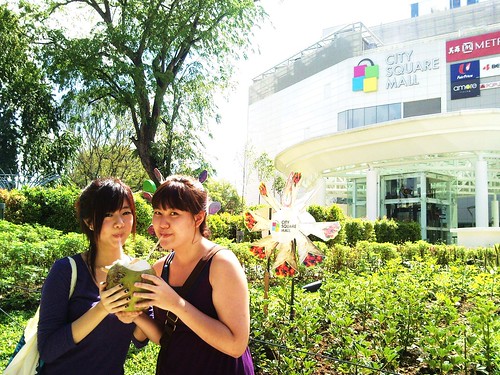
& on our way to the next stop, Yuting fell. ):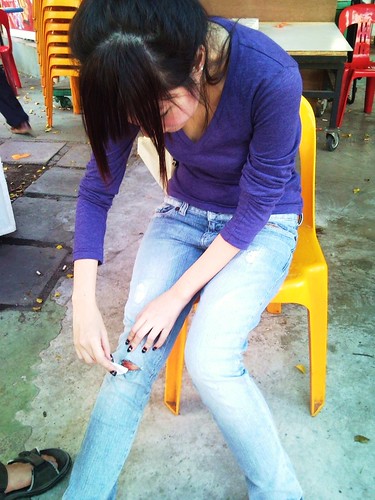
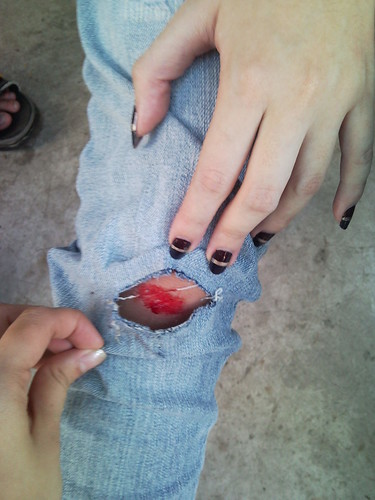
Petain road shophouses

Unique architecture- many ornaments founds on the walls / more richly decorate. Imported Euporeans and Japanese tiles of flower motifs have been immaculately restored and conserved.
Many kept the original old floor tiles to retain the vintage look of the walkway since 1920s.
This row of beautifully-restored shophouses was possibly built in the 1920s at the height of the Singapore's eclectic architecture era, which occurred at a time when commodities such as rubber and tin were fetching high prices fuelling the boom years of the decade.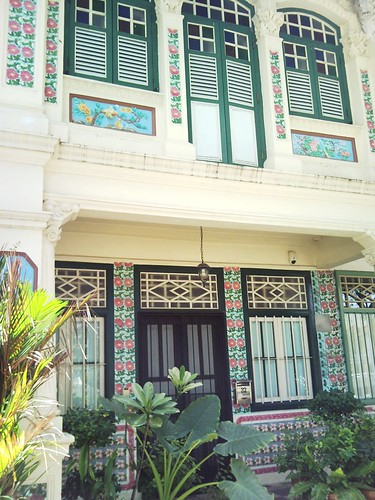
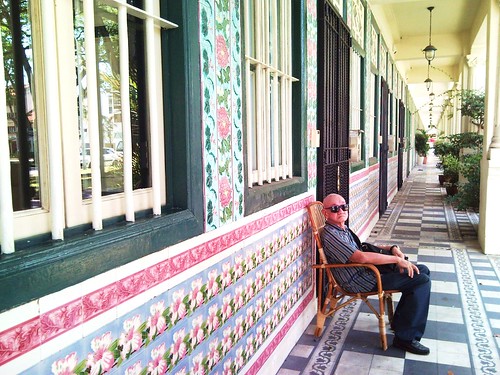

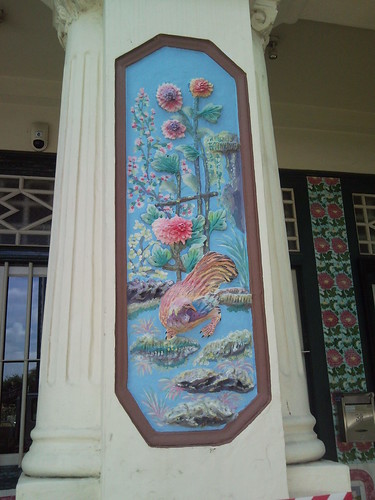
This probably led to a building boom as the newly-rich competed to build houses that were more ornate, more richly-decorated than their neighbours. This row of beautiful shophouses with imported European and Japanese tiles of flower motifs in relief life-like plasters of birds, flowers and other motifs have since been immaculately restored and conserved. Notice the similarities between the plaster mouldings found here and the Balestier Road shophouses.
During the restoration, a lot of the facade tiles on the five foot ways were stolen, but fortunately, the developer was able to commission similar replacement tiles from Vietnam. He also kept many of the original old floor tiles, to retain the vintage look of the walkway.
This area is also known colloquially as Keen Chio Kar, meaning "the foot of the banana plantation" in English. This area has long been known to be a red-light district, even before World War II, and remains so today.
Lavender Street
Samuel at Lavender Street
StreetWhy was it called Lavender Street?
Lavender Street connects the junction of Balestier Road and Serangoon Road to the junction of Kallang Road and Crawford Street. Lavender Street was officially named in the municipal minute of 8 March 1858. At this time, the area was covered by Chinese vegetable gardens. The smells emanating from these gardens were unbearable because of the use of nightsoil (faeces) as fertilizer for the plants. According to one story, it was out of sarcasm that residents referred to the area as Lavender Street. Eventually, the Municipality appropriated the suggestion and formalized the name.
A similar story is told by van Cuylenburg: he notes that in the 1910s the area consisted of a cart track road and on either side were gigantic market gardens. The smells arising from these gardens led to the area being jocularly named Lavender Street. The reputation of this street as being one of the foulest smelling roads in the city persisted through the early twentieth century; in 1929, amidst much laughter, Municipal Commissioner J. Laycock suggested that roads in the neighborhood of Lavender Street ‘might appropriately be named after flowers, such as Rosemary Road and Thyme Road”.
(Reference: Savage,Victor R, and Brenda S A Yeoh. 2003. Toponymics, A Study of Singapore Street Names. Singapore: Eastern Press. )
161 Lavender Street
What kinds of occupations/industries could be found in this area?
Caption: Samuel posing outside the new Aqueen Hotel at Lavender Street.
There are many engineering firms, repair workshops and hardware shops operated by Chinese along Lavender Street. Recently we are also seeing more eateries, hotels, spa and art galleries located in this area.
This was the former premises of the Lee Rubber Company. Can you spot anything unique about the building’ art deco style?
The Art Deco style building consist of façade constructed with simplified geometric patterns for its columns. It’s features are simple, clean shapes with streamlined look. Horizontal fins as sun shading devices are used over the windows. The building was awarded for excellence in building restoration by Urban Redevelopment Authority. This building was originally the premises of the Lee Rubber Company, owned by the famous philanthropist Lee Kong Chian.
More about Lee Kong Chian (1894-1967)
Source: National Library Singapore
Lee Kong Chian was a businessman and philanthropist. He was born in Fujian, the son of Lee Kuo Chuan, a tailor. Lee Kong Chian came to Singapore at the age of eight. He was educated at the Anglo-Tamil School on Serangoon Road and at St Joseph’s Institution. In 1908, he won a scholarship from the Manchu Qing government in China to study at Chi Nan School, Nanjing. He was forced to return to Singapore in 1912 with the cancellation of the scholarship following the 1911 Republican revolution in China. He worked as municipal surveyor and translator before joining Tiong Hwa Chinese Goods Company as assistant manager. In this role he was noticed by the rubber millionaire, Tan Kah Kee, who offered him the opportunity to work in his rubber company, Khiam Aik (1918). Lee rose to the position of manager, and married Tan’s eldest daughter, Ai Lay (1920).
In the 1920s, Lee started his own business. In 1927, he set up a rubber smoking house (later Lee Rubber Company) in Johor, and diversified into pineapples. When Tan Kah Kee’s company went into liquidation, Lee acquired Tan’s assets and became known as the ‘Rubber and Pineapple King’. He then invested in Oversea-Chinese Banking Corporation (OCBC) 1932, later becoming chairman.
When Lee retired in 1954, he devoted himself to public service, especially in education. He encouraged the education of girls by donating to a number of girls’ schools. He also donated generous to the University of Malaya and Nanyang University.
Through the Lee Foundation, he gave millions of dollars to a wide range of charities. Lee was honoured by the University of Singapore (1965) with honorary doctorate in law. He died in June 1967.
(Reference: Singapore, The Encyclopedia, Ed. in chief, Tommy Koh. Singapore. Editions Didier Millet & National Heritage Board)
Kwong Wai Shiu Hospital
Kwong Wai Shiu Hospital
When was this hospital founded and for what purpose?
The hospital was founded in 1910. It started as a free hospital serving the Chinese immigrant community, but was opened to patients from all ethnic groups in 1974 after its constitution was revised. It caters, in particular to patients who suffer from severe disabilities or terminal illnesses and who cannot afford adequate care at other institutions.
Visit the administration section of the hospital for the portraits of the founders. Who were they?
Portraits of the founders and donators hanged on walls at administration section.
The hospital was found by leaders of the Cantonese Communities from three prefectures in China’s Guangdong province. Among Kwong Wai Shiu Hospital’s founders was the influential immigrant businessman Wong Ah Fook, who served as the hospital’s first president.
(Reference: Singapore, The Encyclopedia, Ed. in chief, Tommy Koh. Singapore. Editions Didier Millet & National Heritage Board)
Fortunately, while we were there, it was filled with people! In celebration of the upcoming Chinese New Year!
Celebrating Chinese New Year with karaoke session and buffet lunch.
Social workers with cartons of oranges to be distributed to the patients.
A courtyard in the hospital.
Stone benches donated by individuals and companies are found along corridors.
Central Sikh Temple
The Central Sikh Temple was build to memorialize the first Sikh guru, Guru Nanak.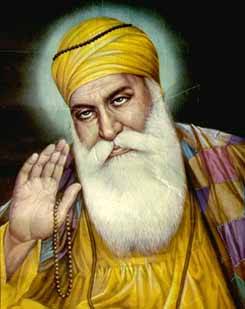
Image from topnews.in
Originally it was constructed within a police compound at Pearl’s hill. A new place was bought in Queens Street to cater to the growing number of Sikh immigrants arriving in Singapore. The new location was able to provide for the needs of the Sikhs spiritually and socially.
Image from heritagetrails.sg
They shifted to their current location (Towner Road) in 1986 after the government acquired the land it was standing on, temporarily housing themselves at the former Bukit Ho Swee Community Centre.
Where the Central Sikh Temple stands now. Back view of Central Sikh Temple. The temple is situated within walking distance from Boon Keng MRT Station. 
Central Sikh Temple is under renovation while we visited it on 6th February 2010.
A notice found at the 1st level of the temple. Entrance was not allowed. Mei Sing borrowed a scarf from a Sikh lady to enter the temple. 
Shoes are to take out and leave them on the racks before entering the temple
A canteen at the 1st level.
Washing area like this are found in difference corners on the 1st and 2nd floor for prayers to wash their legs as footwear were not allowed.
A courtyard or an air well on the 2nd level of the temple
Picture of Guru Angad Sahib in the temple.
Paintings are hanged along the corridors on the 2nd floor, telling stories about the Sikh Gurus. 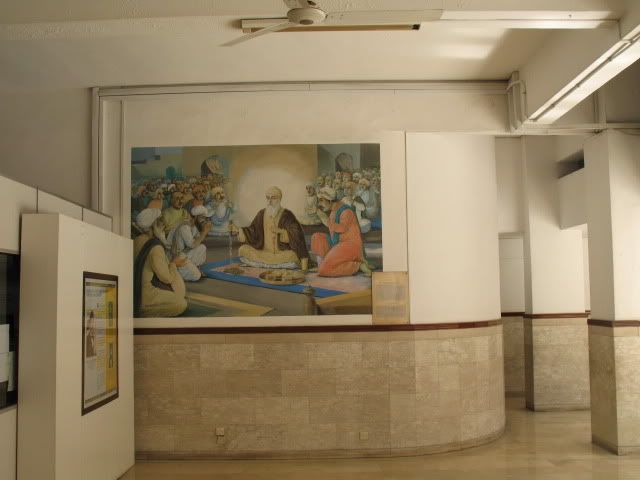
Praying is done inside
To quote Dr. Fernando, 'and now my favorite part, the toilet.'

Boon Keng Esate(Former Bendemeer House)
A memorial stone outside Boon Keng MRT Station Exit B. 
A picture of the Old Bendemeer House (taken from the memorial stone).
Who was the pioneer who owned the tracts of land along this road?
Hoo Ah Kay(also known as Whampoa after he inherited his father’s business, Whampoa & Co. which became synonymous with his own) purchased land to build his bungalow along Serangoon Road. He farmed an orange plantation, fruit orchard and Chinese garden. The Chinese garden, Whampoa’s Gardens or Nam Sang Fa Un, was opened to the public during Chinese New Year was a well-liked place for gatherings and was also particularly popular with the Europeans.
The House Garden.
Image from Periplus Editions (HK) Ltd, cited in timesofmylife.wordpress
Whampoa was the few Chinese who was able to penetrate both the Chinese and English speaking communities as he was able converse in both. Besides Whampoa's Gardens, the other landmark in the area was Whampoa’s extravagant mansion, Bendemeer House.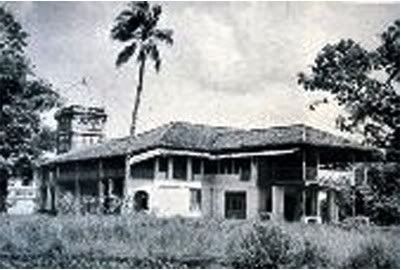
Images from PICAS, National Archives of Singapore, cited in timesofmylife.wordpress
After Whampoa's death, the estate was sold to Seah Liang Seah, son of Seah Eu Chin. Seah Eu Chin was the founder of Ngee Ann Kongsi which served to look after the religious and welfare needs of the Teochew community in Singapore.
Seah Liang Seah was also took over Whampoa's position in the Legislative council, serving as Legislative Councillor in 1883-1890 and 1894-1895. He was also a Municipal Commissioner in the 1890s.
What is the origin of the name Bendemeer?In fact when my father was staying at 922 Serangoon Road (around 1940s to 60s) , the Whampoa’s House was already sold to Mr. Seah Liang Seah in 1880. Mr. Seah Liang Seah was a respected member of the Chinese community. The Liang Seah Street was named after him!
Mr.Seah renamed the house as “Bendemeer House”, “明丽园”. I believed the English name “Bendemeer” was translated from the Chinese name “明丽园” (probably from Teochew dialect). The Municipal Council named the road nearby Bendemeer Road because of his numerous contribution to the community. Sad to say even after the name changed, the estate was still popularly known as “Nam Sang Hua Yuan”, ”南生花园”.
timesofmylife.wordpress
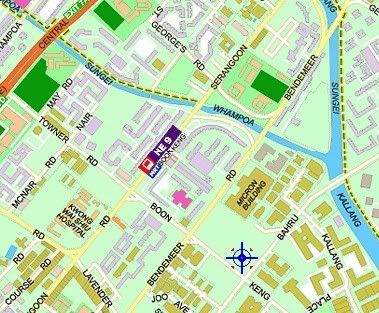
This is the location of the Former Bendemeer House, today’s Boon Keng MRT Station.
Run down Bendemeer House demolished for further development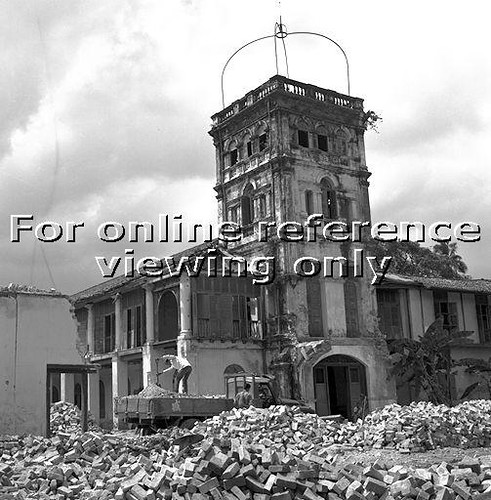
Images from PICAS, National Archives of Singapore, cited in timesofmylife.wordpress
Boon Keng Road
Today's Boon Keng Road...
This road was named after Dr Lim Boon Keng, a medical doctor and humanitarian. He was a member of the Legislative Council and justice of the peace of the Chinese Advisor Board and in 1896, he headed the a commission in search of the sources of poverty in Singapore.
Also known as the “Sage of Singapore and the “Grand Old Man of Singapore”, he set founded the Anti-Opium Society(but opium was only banned during the Japanese Occupation. Also ironic because his grandfather and father were opium farmers) and a private hospital for prostitutes was set up in 1905.
During World War I, he raised funds for the Prince of Wales relief fund and for war planes and was awarded the Order of the British Empire in 1918. Charitable, he also raised funds for the new Amoy University in Fujian, China, the first Chinese university to be founded by the overseas Chinese and was the vice-chancellor from 1921 to 1937.
Chwee Kang Beo Temple (Shui Jiang Miao)
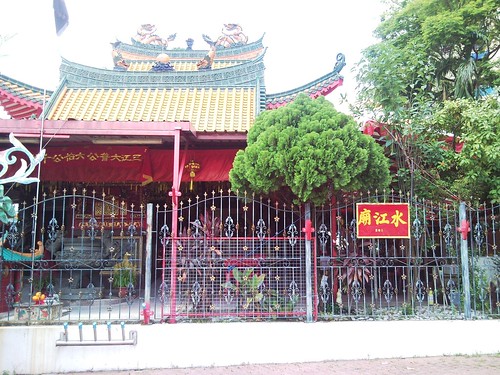
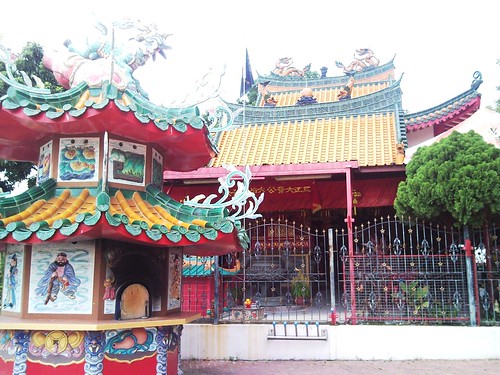
What are some of the chinese beliefs and legends associated with this temple?
Supposed to be the presiding temple of the Tua Pek Kong Deity and Cheng Huang Deity. Apparently, in 1965 there was a meeting that took place between the tiger God, horse general god and Cheng Huang Deity. In Singapore!
Which community worships here?
Overseas chinese in general, Hokkien clans to be specific.
Kallang Reclamation Project / Kallang Basin
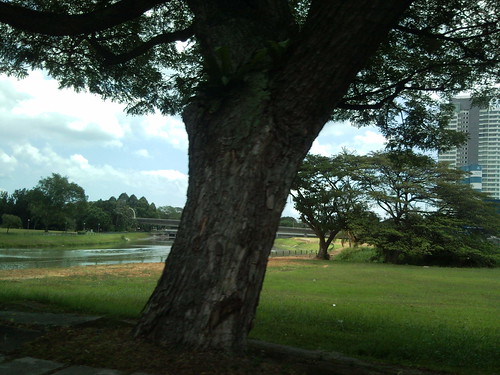

When did the reclamation project take place?
1965- It involved the government first clearing the squatters, then beginning the reclamation of the swampy area in earnest.
What historical artifacts have been found here?
Most famously, in 1960s proto-archaeological work uncovered ming dynasty porcelain.
What were some of the industries that used to be found along the river?
Mainly local maritime trade and perhaps ship reparation services and Sampan's proto-industries.
What is the origin of the name "Kallang"?
Loosely converts to Orang Laut, meaning "people of the sea"
Sri Manmatha Karuneshvarar Temple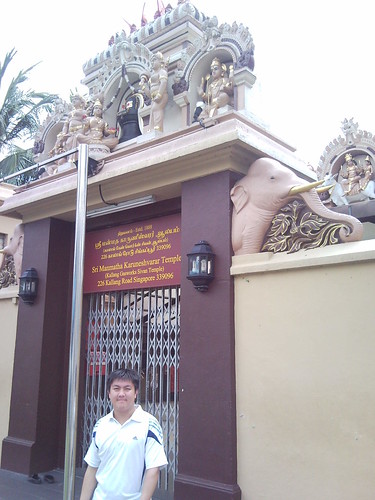
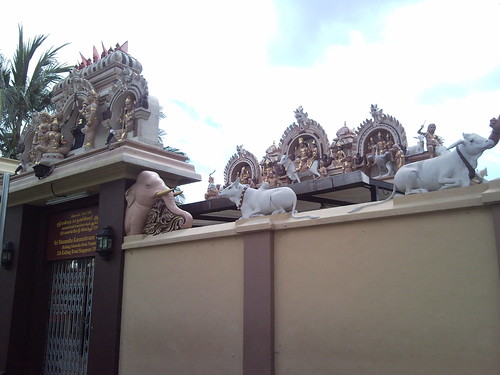
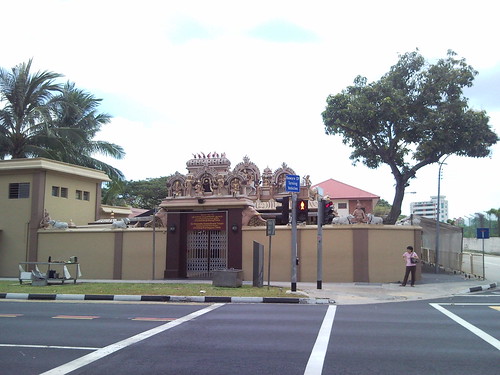
When was this temple established and for whom?
Established on 1st January 1888
By the government then, for the Tamil Community to practice their religion.
Can you give a short history of the temple?
a) Was known as the Kallang Gasworks Sivan Temple, Kallang Gasworks because of the temple's proximity to the place and Sivan because it was the meant as the presiding place for the hindu deity Sri Manmatha Karuneshvarar Sivan.
b) Led by the chief foreman of the Kallang Gasworks, A.V. Irullappa Pillay in 1909. His sons funded renovations conducted that was finished and consecrated by 10th August 1937 in memory of him when the lease was unable to fund itself.
Former Kallang Gasworks
Speculation: I was told by my dad that when he was a teenager practically the whole country had their gas supplied through Kallang Gasworks.
When was the gasworks completed?
1862
What kind of services did it provide?
1862 - when it was first in service it was to provide gas for street lamps.
1901 - The Municipal Commissioners took over and it was expanded to commercial then domestic (elite classes) use.
1963 - PUB took over and with the advent of low cost state built flats and HDB in the 1960s, provided service to flats as well.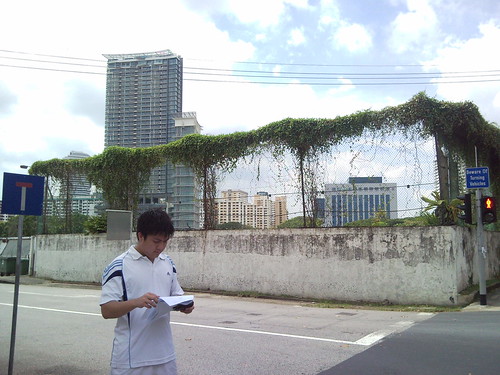

Can you spot Gasholder No. 37?
We did see some buildings still present that could have been this gasholder 37. But a distinct building? No. But we were told the historical site was called gasholder No. 3.
And this marks the end of our enriching Trail!
Last pitstop at a coffeeshop for some sugarcane juice...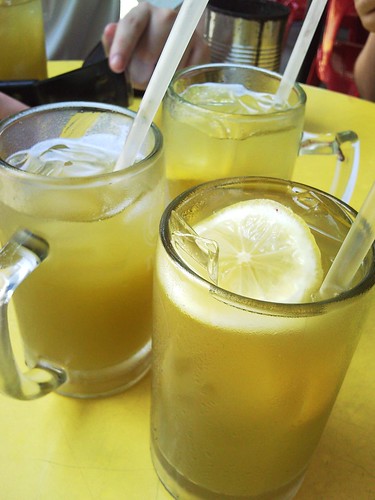
Celestine
Jwen
Meising
Samuel
Yuting